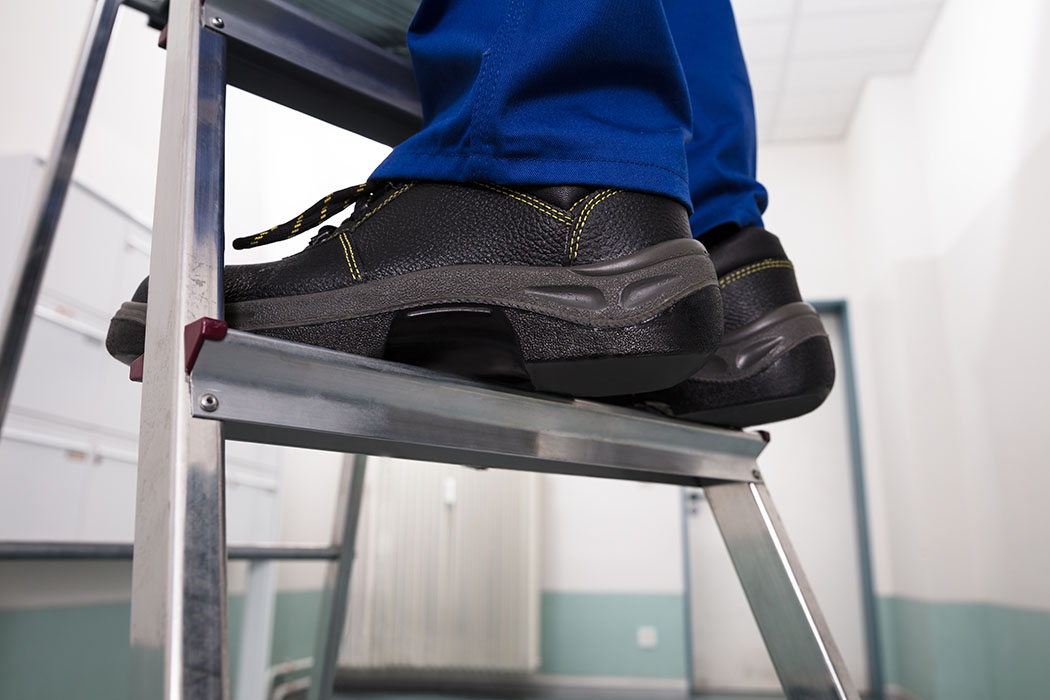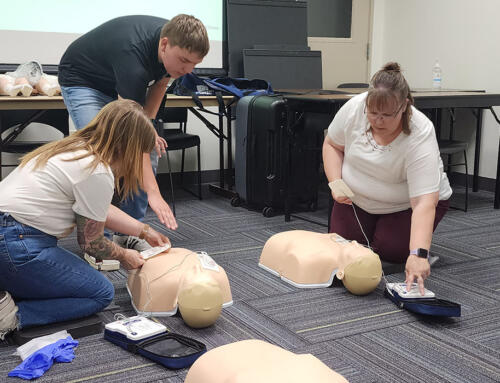Every year over 100 people die in ladder-related accidents, and thousands suffer disabling injuries. March is National Ladder Safety Month and is intended to raise awareness of ladder safety and to decrease the number of ladder-related injuries and fatalities at work and at home.
Missing that last step and overreaching are the two most cited factors in causes of ladder accidents, according to a 2016 study by the American Ladder Institute (ALI). These and similar types of accidents can be easily avoided by adopting the following precautions of basic ladder safety.
Best Practices for Safe Ladder Use
1. Take Your Time Climbing Down—Don’t Skip Any Steps
Exercise caution whether you are climbing down (or up) a ladder. Always face the ladder when climbing up or down, and be cautious until you are on the ground.
2. Stay Within Your Reach
When working from a ladder, keep your center of gravity and body between the side rails. Never overreach. If you can’t easily reach the project area once you have ascended the ladder, climb down and move the ladder more closely in alignment.
3. Use the Right Ladder for the Job
The first rule of using the right ladder is to use a ladder. Too often, people just grab the closest thing to them and end up standing on buckets or chairs instead of taking a few minutes to go get the right ladder. When choosing a ladder, make sure it is tall enough for the job. You should never stand on the top cap or use the top step of a stepladder (or A-frame). A good rule of thumb when selecting a ladder is to calculate a person’s maximum reach height, which is approximately four feet higher than the height of the ladder. Make sure the weight rating of the ladder you choose is greater than your weight and all of the clothes, tools, and equipment you will be wearing/carrying. Remember, when using any ladder, be aware of your surroundings and never use an aluminum ladder when working on or near electricity.
4. Place Your Ladder on Firm, Level Ground
Ladders should be set on firm, level ground. Never use bricks or boards to level your ladder. Instead of building up the low side, dig out the high side for proper set-up. The base of the ladder should be safely secured to prevent accidental movement. You can also use a ladder with non-slip feet or add outriggers or levelers to the bottom of an extension ladder to increase the footprint.
5. Keep Three Points of Contact When Climbing Up or Down
To keep your balance, always maintain three points of contact—two hands and a foot or two feet and a hand—while climbing up or down a ladder. Always face the ladder when using it and maintain three points of contact as you climb up and down. Never carry any tool or equipment up a ladder that might cause you to lose your balance. Heavy tools and equipment should be raised using a rope or lift. If you are working at height from a ladder, make sure you lean your leg or hip into the ladder to maintain balance and contact with the ladder.
For more ladder safety information check out the American Ladder Institute’s website at www.laddersafetymonth.com.





 ESD 112 equalizes educational opportunities for learning communities through innovative partnerships, responsive leadership, and exceptional programs.
ESD 112 equalizes educational opportunities for learning communities through innovative partnerships, responsive leadership, and exceptional programs.